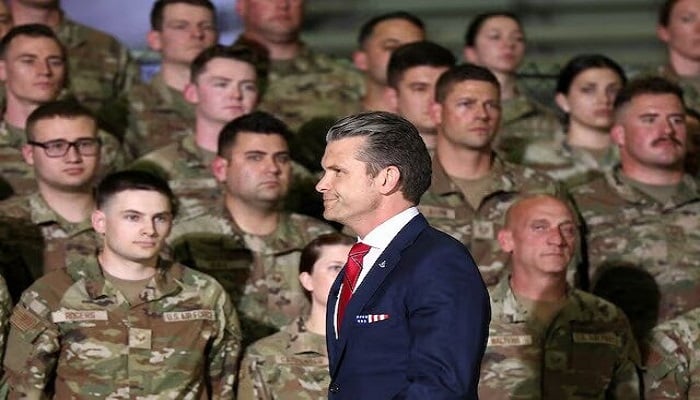PNN – The new wave of dismissals in the Pentagon, from General Jeffrey Cruz to Navy commanders, is not a management change, but a manifestation of the narrative crisis and deep tension in the US security structure after the aggression against Iran.
The United States is more than ever engaged in an internal crisis within its security and military structure. The most recent sign of this crisis was the dismissal of three senior US military and intelligence officials by Secretary of Defense Pete Hegsett, a move that is seen more as a reflection of political tensions and confusion in the White House and the Pentagon than as a sign of management.
The main reason for these dismissals is a report from the US Defense Intelligence Agency (DIA), presented by its director, General Jeffrey Cruz, which emphasized that the recent US attacks on Iranian nuclear facilities failed to achieve their intended goals and only caused a temporary disruption to the progress of Iran’s nuclear program. This was while Trump and Hegsett, in their official positions, had spoken of the “complete destruction of Iran’s nuclear capability.” This contradiction paved the way for the confrontation with Cruz.
Along with him, two other senior Navy commanders, Admiral Nancy LaCour, commander of the Navy Reserve, and Admiral Milton Jimmy Sands, commander of Special Operations, were also dismissed without explanation. This official silence fueled speculation about political score-setting at the Pentagon.
Read more:
The Washington Post’s account of the wave of layoffs in the Pentagon; “American security is at risk”
Signs of a deepening crisis in the US military and its messages
The simultaneous dismissal of three high-ranking officials in the US military and intelligence agencies cannot be considered a mere administrative change. These developments are a sign of the rift between professional military commanders and Trump’s political team. When field reports do not align with the official government narrative, resulting in the removal of commanders, a clear message is sent to the military that professional independence and impartiality are giving way to political loyalty.
Such an approach presents the US military with a serious challenge. At a time when the country is facing multiple crises in the world, including competition with China and Russia, the involvement of commanders in political pressures can reduce the accuracy of military decision-making. This will not only weaken the military’s domestic capabilities but also tarnish America’s international reputation as a cohesive and reliable force.
From the perspective of Iran and regional players, these developments are indirectly significant. The US Defense Intelligence Agency’s acknowledgement of the limited impact of the attacks shows that Tehran has the capacity to rebuild its facilities to strengthen its position in regional equations and open up its hand in potential negotiations.
Overall, the recent crisis in the Pentagon is more than just an internal affair; it has international implications: it both questions the credibility of the US military and indirectly strengthens Iran’s position against US pressure.
The tip of the iceberg of Pentagon layoffs and the foggy outlook for the US military
The firing of Gen. Jeffrey Cruz is just one example of a broader trend of changes in Trump’s second term. Pete Hegsett has removed dozens of commanders and senior officials in recent months. The removals come just two days after Director of National Intelligence Tulsi Gabbard announced that the security clearances of 37 intelligence professionals had been revoked. He also announced a 40% reduction in his office staff by October 1. These measures, ostensibly justified by economic austerity, are actually part of a broader political purge of the US security and military establishment.
The wave of dismissals paints a picture of instability at the highest levels of American command. While the military must confront external challenges, its commanders are concerned about their standing in the face of political decisions from the White House. Such an environment can lead to hasty decision-making, incomplete assessments, and ultimately, failure in international crisis management.
From the perspective of America’s allies, these developments are also a sign of weakness in Washington’s leadership. Countries that count on American support in regional crises will naturally reconsider their calculations when they see such turmoil. This creates more space for Iran and other independent actors, especially in the Middle East.
For Iran, the prospect of this trend means increased room for maneuver. The more Washington is preoccupied with internal instability in its command structure, the less it will be able to exert effective pressure on Iran. This opportunity could mean for Tehran to strengthen its deterrence and continue its strategic plans.
Ultimately, the continuation of these purges will expose the US military to more political manipulation than ever before, resulting in a decline in global credibility and operational capabilities. In the long term, this could shift the regional balance of power in Tehran’s favor.

